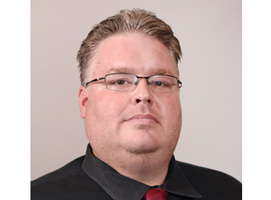fundraising
4 Ways Fundraisers Are Not Ready for 2020

When I stated my fundraising career in the early 2000s, it seemed that every institution was putting together a 2020 Vision. Countless hours were spent pulling together staff, students, and “designated experts” to forecast a far-flung but quickly approaching future in the hopes of positioning their institution for fundraising success.
Looking back, no one knew the game-changing innovations that were about to come to life over the next two decades. At a time when debates raged about whether email was a viable communications method, nobody could imagine a world where social media would drive personal relationships, texting was the preferred means of communications for a third of American adults, and artificial intelligence would be able to tell us more about our constituents than ever before.
Now 2020 has arrived. As we boldly venture into a future far different than those imagine by science fiction authors, it appears few institutions are truly prepared to realize their outdated 2020 vision, let alone truly leverage all the potential available to them as advancement leaders.
Here are four key areas where I have noticed development professionals lagging behind:
1. They focus on the appeal and not the people behind the gift
One of my favorite quotes is “If you want money, ask for advice. If you want advice, ask for money.”
Time and time again I have seen this play out in fundraising. Good fundraisers are engagement professionals first. It is important to connect with your prospects on the most personal level possible to understand their interests, desires, and where your organization can fit into their philanthropic plans. Knowing your prospect personally is the key to securing transformational $1M+ gifts as well as $100 gifts. Many professionals focus on the fundraising appeal and not the people behind the gift. If your focus is fundraising, your prospects will move to a nonprofit that focuses on them and their impact.
2. Their tools don’t talk to each other.
Knowledge is power, yet most institutions are trying to run a supercomputer on triple-A batteries. From traditional communication streams like phone, direct mail, and email to more modern enhancements like texting, digital advertising, and marketing automation, the strength of each is only as good as the weakest link in the communications chain. No channel works alone. Your channels must speak to each other in order to maximize outreach and share valuable prospect information.
My colleague Chris Bingley dives further into this topic in his amazing article, “Innovation in Fundraising is More Than Duct Tape and Twine” which I highly recommend reading after you finish this one.
3. They still talk to their alumni like they are students.
Relationships develop over time. People get to know each other through regular interaction, discovering common ground and areas of like and dislike.
However, so many people in the fundraising industry miss this critical point about engaging alumni. They think they can continue to send solicitation after solicitation based on outdated prospect information pulled from their days on campus, primarily their degree information. While this may help with your first communication, it cannot be the basis of your relationship for life. Every interaction is an opportunity to learn more about your audience. Institutions need to take advantage of new technology and systems to not only capture this information, but use it to build predictive models, shape communications, and drive strategy.
4. They make <Name>, <Last_Gift_Amount> and <Designation> the extent of their fundraising personalization.
Every advancement office needs to strike the right balance of ROI for personalized communications. Personalize too much and your staff have to create dozens of versions of each letter, email, ad, etc. throughout the year. But too little personalization makes communications come off as formulaic and sterile. So how does an institution find this sweet spot?
First, stop trying to do it alone. For years, fundraisers tried to throw more human resources at this problem in the hopes of create more and more segments. When people were not available to do the job, most organizations just wrote it off as too difficult and went along with the best they could do.
Thankfully, there are now AI-driven solutions that can do the heavy lifting necessary to curate content, connect individuals, and deliver tailored communications that fit the needs and desires of a 21st century advancement office.
Talk to RNL about being ready for 2020 and beyond
If any of the four examples above sound familiar to you, then you are not as ready as you could be for 2020. However, the good news is that the technology to get you ready is more cost effective and easy to implement than ever. RNL can help you get there quickly and set you up for success for years to come.
Talk with our fundraising experts and find out how you can use the latest technologies to engage alumni and optimize giving. Request a free consultation today.
